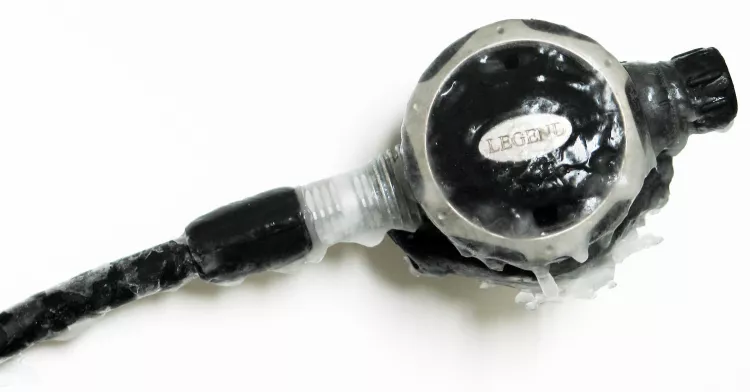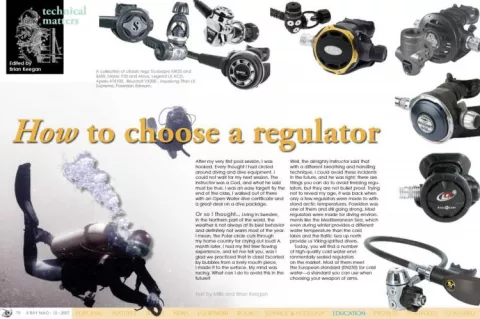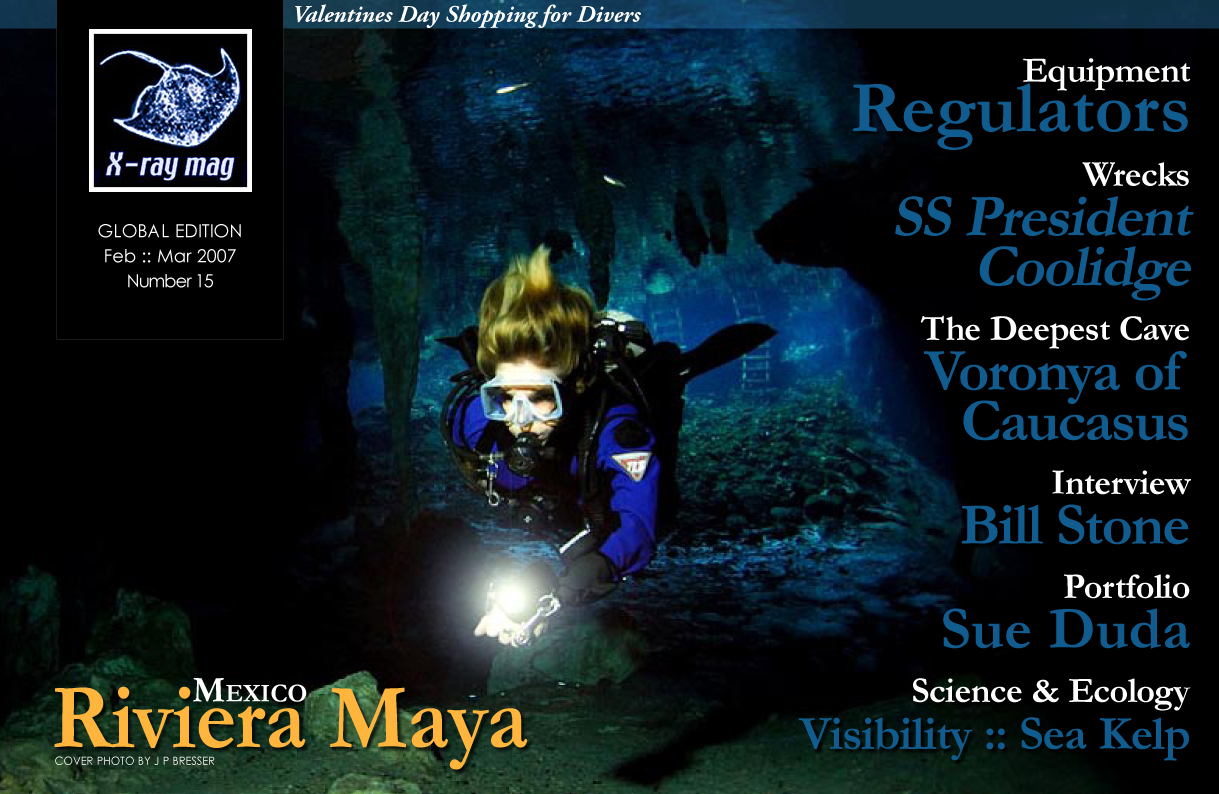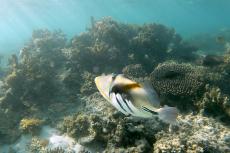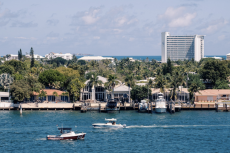After my very first pool session, I was hooked. Every thought I had circled around diving and dive equipment. I could not wait for my next session. The instructor was a God, and what he said must be true. I was an easy target! By the end of the class, I walked out of there with an Open Water dive certificate and a great deal on a dive package.
Contributed by
Or so I thought... Living in Sweden, in the Northern part of the world, the weather is not always at its best behavior and definitely not warm most of the year. I mean, the Polar circle cuts through my home country for crying out loud! A month later, I had my first free flowing experience, and let me tell you, was I glad we practiced that in class! Escorted by bubbles from a lively mouth piece, I made it to the surface. My mind was racing. What can I do to avoid this in the future?
Well, the almighty instructor said that with a different breathing and handling technique, I could avoid these incidents in the future, and he was right; there are things you can do to avoid freezing regulators, but they are not bullet proof.
Trying not to reveal my age, it was back when only a few regulators were made to withstand arctic temperatures. Poseidon was one of them and still going strong. Most regulators were made for diving environments like the Mediterranean Sea, which even during winter provides a different water temperature than the cold lakes and the Baltic Sea up north provide us Viking-spirited divers.
Today, you will find a number of high-quality cold water environmentally sealed regulators on the market. Most of them meet the European standard (EN250) for cold water—a standard you can use when choosing your weapon of arms.
What kind of diver are you?
After my very first pool session, I was hooked. Every thought I had circled around diving and dive equipment. I could not wait for my next session. The instructor was a God, and what he said must be true. I was an easy target! By the end of the class, I walked out of there with an Open Water dive certificate and a great deal on a dive package.
Or so I thought... Living in Sweden, in the Northern part of the world, the weather is not always at its best behavior and definitely not warm most of the year. I mean, the Polar circle cuts through my home country for crying out loud!
A month later, I had my first free flowing experience, and let me tell you, was I glad we practiced that in class! Escorted by bubbles from a lively mouth piece, I made it to the surface. My mind was racing. What can I do to avoid this in the future?
Well, the almighty instructor said that with a different breathing and handling technique, I could avoid these incidents in the future, and he was right; there are things you can do to avoid freezing regulators, but they are not bullet proof.
Trying not to reveal my age, it was back when only a few regulators were made to withstand arctic temperatures. Poseidon was one of them and still going strong.
Most regulators were made for diving environments like the Mediterranean Sea, which even during winter provides a different water temperature than the cold lakes and the Baltic Sea up north provide us Viking-spirited divers.
Today, you will find a number of high-quality cold water environmentally sealed regulators on the market. Most of them meet the European standard (EN250) for cold water—a standard you can use when choosing your weapon of arms.
There are different kinds of regulators. While the basic function is to provide you with air, you will find that there are different regulators for different kind of activities. We will go through what you need, step by step.
The first thing you need to decide is what kind of diving you will be doing and in what environment you are going to dive. This is perhaps the most important piece of your dive equipment and nothing to be rushed into.
- What kind of diver are you?
- What environment are you going to dive?
Identifying your needs will help you choose the right regulator for your activities.
Are you a Warm Water Diver?
A warm water diver is someone who dives only in warmer water temperatures who does not require extreme measures to be safe and comfortable while diving. According to the EU norm cold water diving begins when the temperature of the water is equal to or drops below 6°C (50° F).
Then choose:
While it never hurts to buy the best equipment you can, under those circumstances where there is no risk, at any time, that your regulator will freeze while breathing—it is not necessary to buy a top-of-the-line regulator.
Or a Cold Water Diver?
When diving in cold water, it’s vitally important that you use regulators designed for cold water. You will be looking for both a first stage that limits formation of ice, as well as second stage that doesn’t freeze in an open or closed position when the warm moisture in the diver’s breath touches the cold regulator.
Then choose:
This should go without saying—use regulators designed for cold water diving! Look for regulators that meet the EN250 standard for cold water performance. Cold water regulators are either environmentally sealed or use something called a ‘heat sink’.
A heat sink uses the cold water to ‘warm’ the first stage, which limits the formation of ice. By default, cold water regulators are high performance regulators.
Are you considering Nitrox?
A recreational nitrox diver is a diver that uses nitrox during a dive for a safer dive, by using the air tables. When diving with the gas mix nitrox, there are certain things to consider. You will dive with a higher content of oxygen in your tank, which is a flammable gas, and you need to adjust your equipment for this.
Then choose:
First, make sure you are trained for nitrox diving. Dealing with nitrox means dealing with a risk of explosion, albeit small. Your dive equipment needs to be grease free. Because mistakes can be made in mixing the O2 and air to get the appropriate mixture, each tank needs to be analyzed for O2.
Most new high performance regulators are either nitrox-compatible or ready for nitrox use, with a DIN or yoke first stage.
Ask your local dealer
At this stage, you should now be concentrating on details like comfort and airflow. If the sales person tries to baffle you with technical phrases and fancy words, call him/her on it and have them explain. That is what they are there for, and one good reason to spend your money in a dive shop instead of shopping online.
Don’t be cheap
To think cheap can be costly. There are sometimes huge price differences on dive equipment in different parts of the world, and although you might be tempted to save money while traveling, don’t do it unless you have done your research before the trip. If you do buy a regulator made overseas, stick to an international brand, or you could be in for an expensive surprise when it is time for service.
Sure, your regulator was a find, but if your new find is not sold in your country, it is quite possible that you wont be able to find a service technician trained for that brand in your neck of the woods.
On top of that, if you do find someone, the parts might have to travel overseas as well. You do the math. Make sure you know what brands sells in your country, and if the warranty is valid in your home country, before going on a shopping spree. ■
Can I use a cold water regulator in warm water?
Yes. A regulator designed for cold water is by necessity a top performance regulator that can handle the most extreme conditions. Any good quality regulator from a reputable dealer will provide you with air in a safe way, when diving in warm water.

